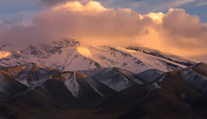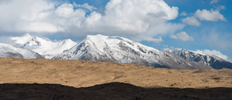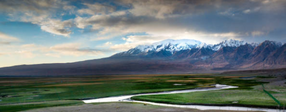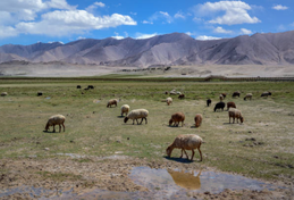Why Does the Pamir Plateau Matter?
The Pamir Plateau often called the “Roof of the World” sits at a staggering elevation of over 4,000 meters above sea level. Nestled at the intersection of Central and South Asia this plateau holds immense geopolitical ecological and cultural significance. But why should we care about this remote rugged terrain?
From an environmental perspective, the Pamir Plateau serves as a critical water source for millions of people. Major rivers such as the Amu Darya and Syr Darya originate here feeding into the Aral Sea and supporting agriculture across Central Asia. Historically the region played a pivotal role in the Silk Road acting as a bridge for traders and explorers linking China Persia, and Europe.
However, the Pamir Plateau faces numerous challenges today.

Climate change is melting its glaciers threatening water supplies and biodiversity. Geopolitical tensions among bordering nations like Tajikistan, Afghanistan, and China add complexity to its governance. Understanding the Pamir Plateau isn’t just about geography – it’s about grasping a region’s role in shaping history and its impact on the modern world.
Solution: Unlocking the Secrets of the Pamir Plateau

The Pamir Plateau is more than just a remote mountain range it’s a living case study of how nature and culture intertwine. By delving into its features and significance. we can better appreciate its role in global ecosystems and geopolitics.
- Geographical Significance
The plateau spans parts of Tajikistan Afghanistan China and Pakistan. It is part of the larger Pamir mountain system. Which includes towering peaks such as Kongur Tagh (7,649 meters) and Muztagh Ata (7,546 meters). With its rugged terrain and high altitude the plateau is often likened to Tibet.

The region’s harsh environment includes extreme temperatures ranging from -20°C in winter to 30°C in summer. The thin atmosphere and high UV exposure make it one of the most challenging places for human habitation. Yet, nomadic communities have thrived here for centuries raising yaks and living in yurts adapted to the plateau’s unique conditions.
- Ecological Importance
The Pamir Plateau’s ecosystems are incredibly diverse supporting rare species such as the snow leopard Marco Polo sheep and Himalayan ibex. It is also home to unique plant species adapted to cold desert conditions. The plateau’s glaciers act as natural water reservoirs sustaining river systems across Central and South Asia.
However, rising global temperatures are causing these glaciers to shrink at alarming rates. For example, the Fedchenko Glacier one of the longest in the world outside polar regions, has been receding steadily. This glacial retreat not only impacts biodiversity but also threatens water availability for millions downstream.
Cultural and Historical Legacy
The Pamir Plateau’s history is rich and complex. As part of the ancient Silk Road, it served as a crossroads for merchants scholars and adventurers. Marco Polo one of the most famous travellers to pass through this region, described it as “the highest place in the world.”

Today, the plateau’s cultural tapestry includes Kyrgyz Tajik Wakhi and Pamiri peoples. They maintain traditions passed down through generations from weaving intricate carpets to playing traditional music. Its residents’ resilience and tenacity can be seen in this cultural diversity.
Strategic Importance
In modern geopolitics, the Pamir Plateau holds significant strategic value. Border disputes such as the Tajikistan-Kyrgyzstan clashes underscore its importance in regional politics. Additionally China’s Belt and Road Initiative has heightened the plateau’s relevance. Infrastructure projects aim to connect Asia and Europe through this challenging terrain.
Action: How You Can Engage with the Pamir Plateau

Understanding the Pamir Plateau goes beyond reading about it engaging with its challenges and opportunities can make a difference.
Here’s how:
- Travel Responsibly
The Pamir Highway is one of the world’s highest and most beautiful routes and explorers often take it. But tourism must be sustainable. Supporting local communities by hiring local guides staying in village-run guesthouses, and respecting cultural norms helps preserve the region’s heritage.
- Advocate for Environmental Protection
The Pamir Plateau is a fragile ecosystem. Organisations like the Snow Leopard Trust work to protect endangered species in the region. Supporting such initiatives or spreading awareness about glacial melt can contribute to conservation efforts.
- Dive Deeper into Its History

Books documentaries and research papers offer deeper insights into the plateau’s past and present. From reading Marco Polo’s The Travels to exploring modern studies on climate impact there’s no shortage of resources for the curious mind.
Case Study: The Pamir Highway as a Lifeline
The Pamir Highway (M41) stretches over 1,200 kilometres, connecting Dushanbe in Tajikistan to Osh in Kyrgyzstan. It is a vital transportation route for the region’s inhabitants enabling trade and communication in an otherwise isolated area.

Challenges on the Highway
Infrastructure: Landslides floods, and extreme weather frequently damage the road, making maintenance a constant challenge.
Climate Impact: Rising temperatures exacerbate glacial melt, increasing the risk of flash floods and water shortages.
Economic Struggles: Despite its importance, local communities along the highway often lack access to basic services like healthcare and education.
Success Stories

Efforts to improve the Pamir Highway have brought tangible benefits. For instance:
Tourism Growth: The highway has become a magnet for adventure travellers, boosting local economies.
Community Projects: NGOs and local governments have collaborated to provide better infrastructure and services to villages along the route.
This case study highlights the dual nature of the Pamir Plateau. Its challenges demand attention, but its potential inspires action.
Conclusion
The Pamir Plateau displays proof of both nature’s and humanity’s tenacity. Its towering peaks, melting glaciers, and rich cultural heritage make it a place of unparalleled significance. Yet, it also faces existential threats that demand urgent solutions.
By exploring, advocating, and engaging with the Pamir Plateau, we contribute to preserving its legacy. Whether you’re an adventurer, a researcher, or someone looking to make a difference, the “Roof of the World” awaits your attention.
